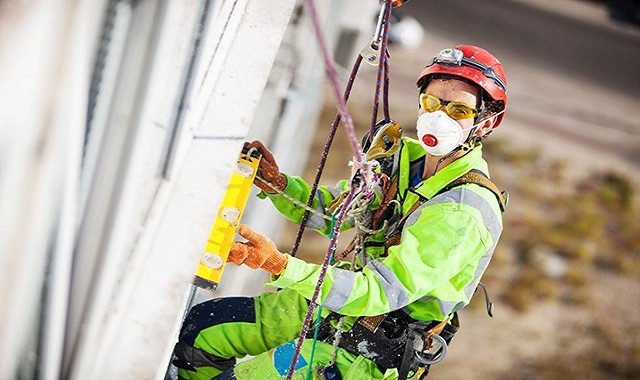
Construction Jobsite Safety? Create a Culture of Success With These Proven Techniques
Table of Contents
Construction Jobsite Safety? Create a Culture of Success With These Proven Techniques
Companies devote significant resources to developing safety programs and instilling a culture of jobsite safety within their workforce. Businesses that are successful in building a safety philosophy have seen workplace injuries decline, productivity increase and insurance costs cut.
A wide range of companies in the construction industry have realized success after moving the safety of their employees to the forefront of their priority list. But what happens when those workers are paired on a jobsite with employees from companies that do not share the same values and fail to utilize the proper safety practices? How can we effectively demonstrate a culture of safety on the jobsite and set an example for coworkers?
Traditionally, management of a site’s safety program falls to the control contractor. This top-down approach forces compliance, but can create problems for trade contractors rotating between various project sites with different controlling contractors. One general contractor may enforce the minimum OSHA requirements, while others exceed the guidelines established by law. Inconsistency is not only confusing, but provides trade contractors with an excuse when they are censured for noncompliance.
One approach to solving this problem is creating a site-specific safety program–a plan tailored for each individual project and the group of trades working on it. This strategy represents a combination of traditional tools coupled with techniques aimed at building a culture of safety on each specific site. Following are some examples of these techniques.
1. Site-specific safety committees.
Many organizations elect a committee to administer their company’s safety program. Consider this same approach to a site-specific safety program. Gather representatives from each major trade category and assign them to the site safety committee. It’s also important to create a diverse group of representatives from foremen level to laborer in order to have a range of experience. This committee can set jobsite safety policies, communicate the controlling contractor’s expectations to the workers onsite, and most importantly, act as an extension of the controlling contractor’s safety staff when monitoring work around the site. It is vital to empower this group with the ability to stop unsafe work and enforce safety guidelines. The group should meet regularly to discuss specific safety issues and report on the status of safety measures established for the site. Building a committee will increase the feeling of ownership in the safety program, and in turn increase overall “buy in” around the project site from all workers.
2. Break down traditional barriers.
Walk through any jobsite at break time and it is likely that each individual trade gathers together in their own peer group. It is fitting that coworkers would spend this time together socializing and discussing daily tasks, but consider mixing tradespeople together by hosting “tool box talks” and safety discussions. Many aspects of jobsite safety, such as ladder use, electrical hazards and jobsite cleanliness, apply to all trades. Jobsite foremen may be surprised by the differing perspectives offered during safety topic discussions in these diverse groups of workers; not to mention, witnessing the jobsite camaraderie among tradespeople is also rewarding.
3. Reward good behavior as much as possible.
There is no doubt that violations of safety regulations and guidelines should be dealt with swiftly and consistently. Equal attention must also be given to rewarding those that model good behavior. Consider publicly recognizing a specific trade or company for their efforts, either at a progress meeting or in a formal project report. The controlling contractor can notify a tradesperson’s supervisor when they are performing exceptionally well. Make sure to be specific and let the individual know how important it is to you that everyone go home safe each day. This individual recognition may be more time-consuming than traditional jobsite incentive programs, but will aid in building a safety culture that works from the inside out, instead of from the top down.
These examples are not overly complex and may not be revolutionary, but they have proven themselves effective on numerous project sites. While diligently training your own staff is crucial, you need to always remember the larger team and the importance of their lives as well. Creating a “micro safety culture” on the project sites can greatly complement the safety training provided for individual employees.
How eSUB Can Help
eSUB is a cloud-based project management platform built especially for subcontractors. It seamlessly integrates with leading construction software systems so you can easily switch from your current RFI process to a cloud-based system to upgrade RFI process.
eSUB organizes all of your project information in one place, allows for smooth collaboration, and streamlines communication through its intuitive interface. It also works on your mobile, so you can track projects on the go—no matter where or when—and stay up-to-date.
About the Author